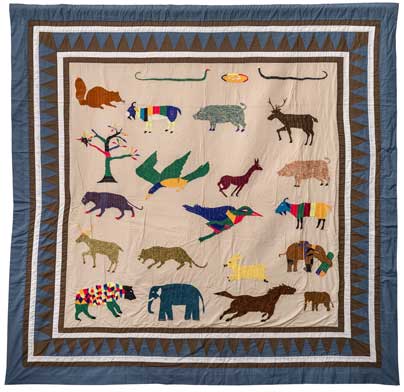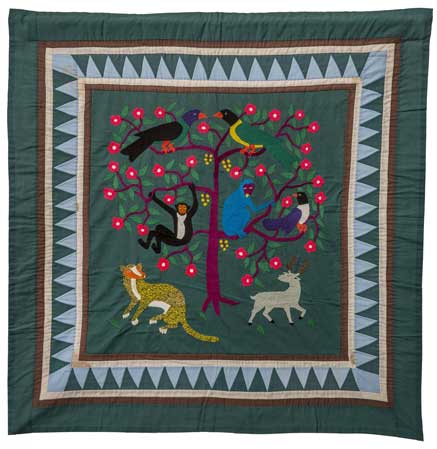'Cloth as Community' opening at Bradbury Art Museum
JONESBORO – Bradbury Art Museum will present the exhibition, “Cloth as Community: Hmong Textiles in America,” opening with a reception Thursday, Jan. 28, at 5 p.m. The exhibition features textiles including flower cloths and embroidered story cloths by members of the Hmong community who descend from Southeast Asia, most notably Thailand, Vietnam and Laos.
Bradbury Art Museum is in Fowler Center, 201 Olympic Dr., on the Arkansas State University campus. Admission to the reception and exhibit is free.
Hmong “flowercloth” or paj ntaub pronounced pandow, is one of the world’s great textile traditions. However, this complex art was not widely known outside of Asia until after the Vietnam War, when Hmong refugees began immigrating to the United States in the late 1970s. They brought their needlework art, a tradition passed down in cloth for generations. “Cloth as Community: Hmong Textiles in America” features these fabric works, including designs derived from traditional paj ntaub and the embroidered story cloth form that developed in Hmong refugee camps in Thailand.
The works in this exhibition demonstrate a period in time when traditional paj ntaub influenced new designs; when works were produced at a larger scale or with more space devoted to the triangular borders; and when embroidered story cloths changed to fit a new market that was different from tourists or relief workers in the camps. They illustrate the profound relevance of textiles in their culture, and how this art form changed as it adapted to fit new realities.
The story of Hmong textile production begins with traditional abstract geometric designs created by embroidery, appliqué, reverse appliqué, and indigo batik that established clan identity for family and ceremonial use. Historically, these items were not sold. Instead they provided important spiritual protection, such as the colorful baby carriers and hats designed to disguise children from evil forest spirits. They evolved in refugee camps and later to generate an important source of income for families, leading to design changes and new inventions such as the embroidered story cloth. This is also where these narrative textiles shift from scenes of agricultural life into images of the war and their exile.
As the memory of the Vietnam War receded and American buyers desired more upbeat subject matter, many of the new story cloths morphed again into representations of life in America or nostalgia for the pastoral life left behind.
Organized and toured by ExhibitsUSA, a national part of Mid-America Arts Alliance, the exhibition was first curated in 1999 by Carl Magnuson, a cultural anthropologist, working with a Hmong refugee community. Curatorial updates have been done by Geraldine Craig, who has published more than a hundred essays on contemporary art and Hmong textiles. ExhibitsUSA sends more than 25 exhibitions on tour to more than 100 small- and mid-sized communities every year. Based in Kansas City, Missouri, Mid-America is the oldest nonprofit regional arts organization in the United States. More information is available at www.maaa.org and www.eusa.org.
“Cloth as Community: Hmong Textiles in America” will continue through Feb. 24. The 20th annual “Delta National Small Prints Exhibition” will also open at this time.
BAM hours are noon to 5 p.m. Tuesday through Saturday, 2 to 5 p.m. on Sunday, and by appointment. Admission is free. For more details, contact BAM at 870-972-2567, by email at bradburyartmuseum@AState.edu, or visit the website, BradburyArtMuseum.org.
# # #







